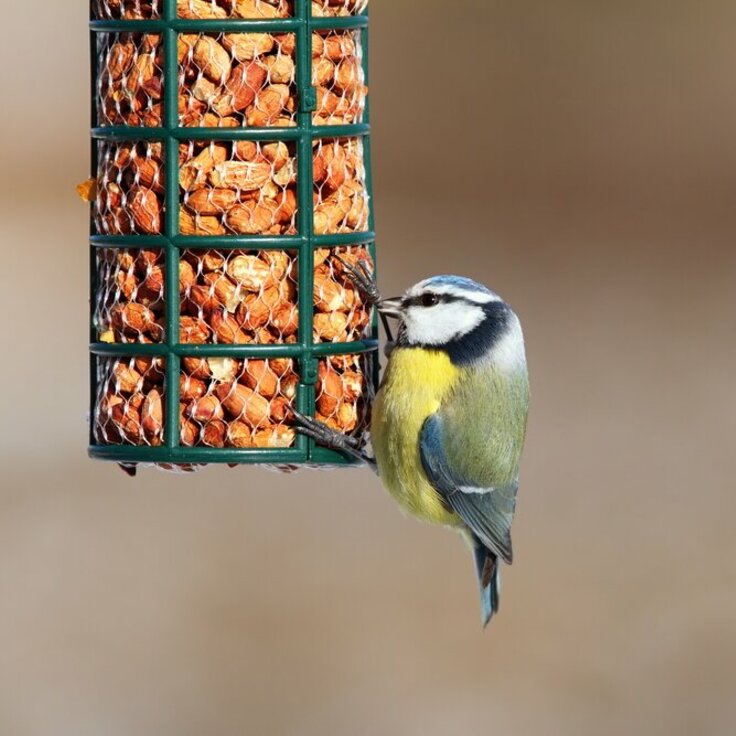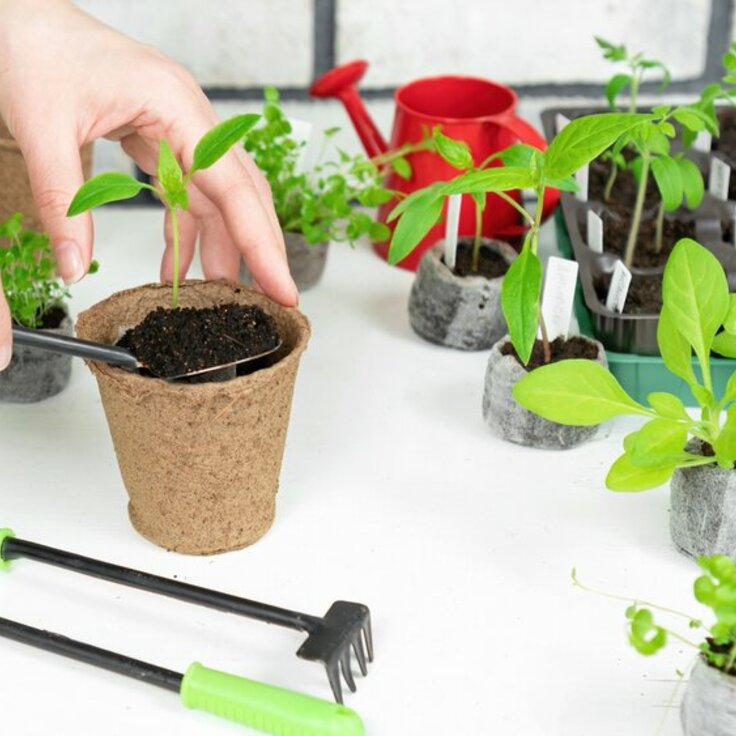Caring for Saguaro Cacti
Visions of Southwestern deserts often bring to mind the mighty saguaro (Carnegiea gigantea), arms stretched upwards to the sky. New residents lucky enough to have saguaro in their landscape often ask about birds creating cavities in the saguaro, worried that it will kill the cactus. This activity is an essential part of the desert's ecosystem, and no action is required to stop it. If you look carefully at saguaro growing in the native desert, you'll spot many bird holes, which are, in turn, full of all kinds of wildlife.
Gila woodpeckers and gilded flickers hollow out the cavities as nesting sites. Saguaro have adapted to seal off the interior cavity, forming a hard shell, called a saguaro "boot." There's no need for humans to interfere. If you try too vigorously to chase away the birds, they may just double their efforts, continuing to peck new holes. Under no circumstances should you apply any sealant to the hole or try to fill it because this will just interfere with the plant's own healing mechanism.
After the original builders finish nesting and move on, other creatures take over the cavity for nesting or respite from the heat. The interior can be 10 to 20 degrees cooler than the outside temperature, making the holes especially valuable real estate in summer! Waxy, white, funnel-shaped flowers bloom in May and June, providing nectar as well as a place to pluck insects. Fruits filled with crimson flesh and black seeds follow in July, and are sought after by many creatures, including humans. Native people traditionally harvested the fruit as an important summer food source.
Care Tips
For new transplants, water monthly during drought but be careful not to overwater in winter as the roots will rot in cold, wet soil. Saguaro roots grow in the top few inches of soil, spreading as wide as the cactus is tall. Once established, saguaro don't need watering and will survive on rainfall. Overwatering in the landscape can make them top-heavy and without a supporting root structure, they can topple, with their tremendous weight and spines creating a hazardous situation. The accordion-like woody ribs expand and contract based on available moisture, but if they absorb too much water, splits in their sides may develop.
Once established, the best thing you can do for your saguaro is to leave it alone. Saguaro never need fertilizer because they have adapted to obtain all the nutrients they need from desert soil. Don't disturb the root area by digging, installing plants with different water needs, or compacting with equipment or hardscape, all of which may destroy the roots.
Be careful not to damage the saguaro's skin during transplanting or by bumping into it, say, with a wheelbarrow. As a saguaro ages, the base becomes brown and woody-looking, but this is natural. Inspect your saguaro periodically, especially during summer months, watching for black ooze dripping from a split. This is an indication of bacterial rot, which can quickly kill the plant. Some experts say to remove the rot with a spoon; others say to cut it out with a knife. Just be careful not to gouge farther into the flesh, and sterilize any implement before using it. After removing the rot, disinfect the hole with a weak bleach solution (1 part bleach, 9 parts water) for several days in a row. Using a spray bottle is easiest. Leave the hole open for good air circulation.
Saguaro add a unique sense of place to desert landscapes, and they require very little from the gardener in return.
Read more from the national gardening association.








